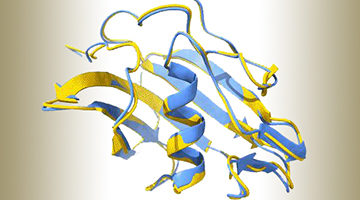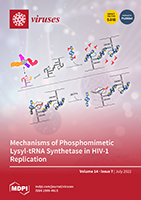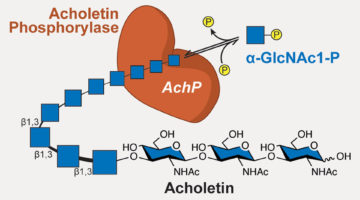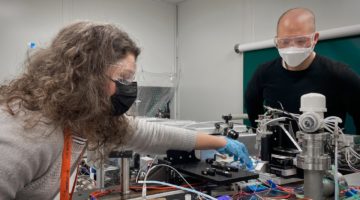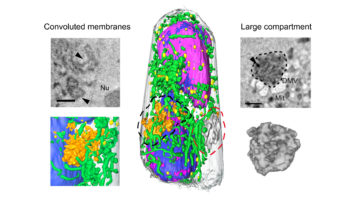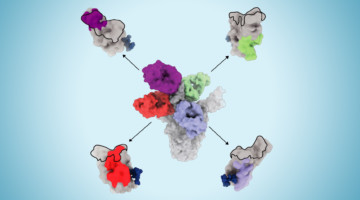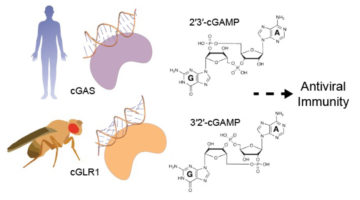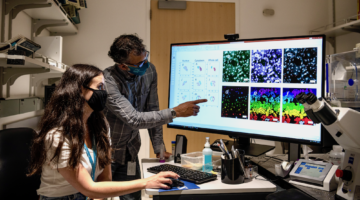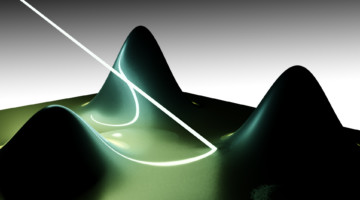Rotaviruses are the major causative agents of gastroenteritis worldwide. Attempts to design vaccines are complicated by the rotaviruses’ enormous genetic and immunological diversity. At the ALS, researchers validated the novel structure of a key rotavirus protein, predicted using AlphaFold2, a deep-learning artificial-intelligence program. Read more »
Phosphomimetic S207D Lysyl–tRNA Synthetase Binds HIV-1 5′UTR in an Open Conformation and Increases RNA Dynamics
Binding assays, RNA chemical probing, and SAXS showed that phosphomimetic S207D LysRS binds in an open conformation preferentially to dimeric HIV-1 genomic RNA. A new working model is proposed wherein a dimeric phosphorylated LysRS/tRNA complex binds to a genomic RNA dimer, facilitating tRNA primer release and placement onto the binding site. Future anti-viral strategies that prevent this interaction are envisioned. Read more »
Bacterial Enzyme Produces Biodegradable Polymer
Researchers discovered a bacterial enzyme that synthesizes a biopolymer whose repeating units are linked together in way that had not been previously observed. The new polymer is biodegradable and may be biocompatible, with potential for applications ranging from medical therapeutics to eco-friendly plastic alternatives. Read more »![]()
![]()
Safely Studying Dangerous Infections Just Got a Lot Easier
Researchers have cranked up the speed of imaging infected cells using soft x-ray tomography, a technique that can generate incredibly detailed, three-dimensional scans. The approach gives an easy way to quickly examine how cells’ internal machinery responds to SARS-CoV-2, or other pathogens, as well as how the cells respond to drugs designed to treat the infection. Read more »
Rapid 3D Visualization of Lung Cells Altered by SARS-CoV-2
In this work, researchers illustrated the potential of soft x-ray tomography to rapidly characterize and quantify the structural changes induced in cells infected by SARS-CoV-2, revealing profound alterations of the subcellular architecture induced by viral infection over time. Read more »
New Device Advances Commercial Viability of Solar Fuels
A Berkeley Lab research team developed a new artificial photosynthesis device component that exhibits remarkable stability and longevity as it selectively converts sunlight and carbon dioxide into two promising sources of renewable fuels—ethylene and hydrogen. Read more »
An Antibody That Broadly Neutralizes SARS-CoV-2
An antibody that appears to neutralize all known SARS-CoV-2 strains and closely related coronaviruses was discovered with the help of the ALS. The work highlights principles underlying antibody potency, breadth, and escapability that can guide the development of therapeutics against the current and potential future pandemics. Read more »![]()
![]()
Sounding the Antiviral Alarm: A New Family of Immune-System Sensors
Comparison of enzyme structures from humans and insects revealed a new family of evolutionarily related immune-system sensors, triggered by viral RNA or DNA to produce tailored signals that initiate antiviral action. The results shed new light on the diversity and development of immune defenses in animals. Read more »
Cell ‘Fingerprinting’ Could Yield Long-Awaited Alzheimer’s Disease Diagnostic
A new application of infrared spectromicroscopy analyzes cells for signs of Alzheimer’s disease by measuring how the molecules in cells vibrate upon exposure to infrared light. The vibrational profile of each sample is so distinct and the difference between diseased and healthy cell samples is so visible that researchers liken the process to “cellular fingerprinting.” Read more »
Autonomous Data Acquisition for Scientific Discovery
Researchers at large scientific facilities such as the ALS have applied a robust machine-learning technique to automatically optimize data gathering for a variety of experimental techniques. The work promises to enable experiments with large, complex datasets to be run more quickly, efficiently, and with minimal human intervention. Read more »![]()
![]()
- « Previous Page
- 1
- 2
- 3
- 4
- 5
- …
- 7
- Next Page »
